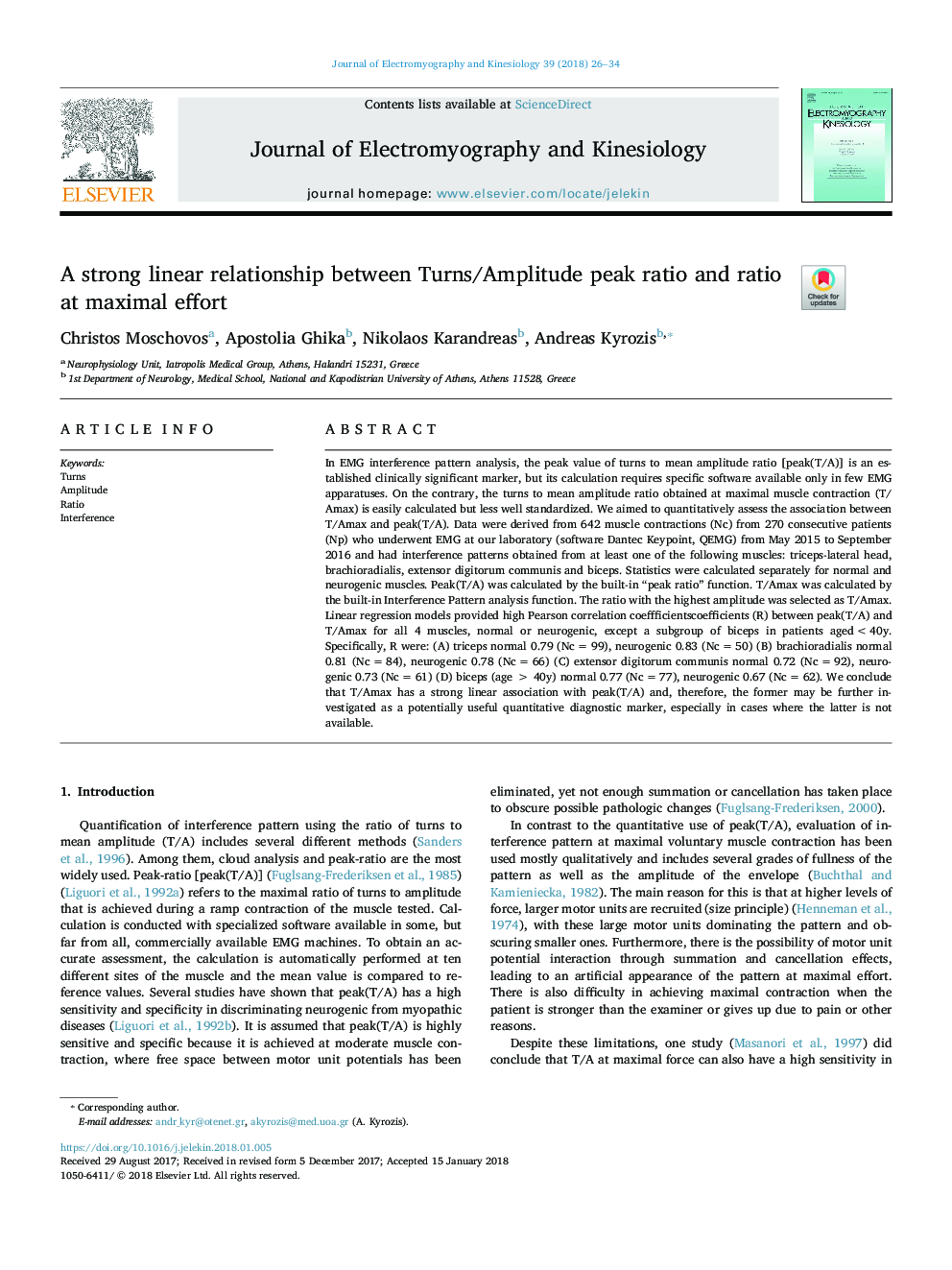| کد مقاله | کد نشریه | سال انتشار | مقاله انگلیسی | نسخه تمام متن |
|---|---|---|---|---|
| 8799783 | 1604174 | 2018 | 9 صفحه PDF | دانلود رایگان |
عنوان انگلیسی مقاله ISI
A strong linear relationship between Turns/Amplitude peak ratio and ratio at maximal effort
ترجمه فارسی عنوان
یک رابطه خطی قوی بین نرخ نوسان / نسبت اوپک و نسبت به حداکثر تلاش
دانلود مقاله + سفارش ترجمه
دانلود مقاله ISI انگلیسی
رایگان برای ایرانیان
کلمات کلیدی
چرخش، دامنه نسبت، دخالت،
موضوعات مرتبط
علوم پزشکی و سلامت
پزشکی و دندانپزشکی
ارتوپدی، پزشکی ورزشی و توانبخشی
چکیده انگلیسی
In EMG interference pattern analysis, the peak value of turns to mean amplitude ratio [peak(T/A)] is an established clinically significant marker, but its calculation requires specific software available only in few EMG apparatuses. On the contrary, the turns to mean amplitude ratio obtained at maximal muscle contraction (T/Amax) is easily calculated but less well standardized. We aimed to quantitatively assess the association between T/Amax and peak(T/A). Data were derived from 642 muscle contractions (Nc) from 270 consecutive patients (Np) who underwent EMG at our laboratory (software Dantec Keypoint, QEMG) from May 2015 to September 2016 and had interference patterns obtained from at least one of the following muscles: triceps-lateral head, brachioradialis, extensor digitorum communis and biceps. Statistics were calculated separately for normal and neurogenic muscles. Peak(T/A) was calculated by the built-in “peak ratio” function. T/Amax was calculated by the built-in Interference Pattern analysis function. The ratio with the highest amplitude was selected as T/Amax. Linear regression models provided high Pearson correlation coeffficientscoefficients (R) between peak(T/A) and T/Amax for all 4 muscles, normal or neurogenic, except a subgroup of biceps in patients aged <40y. Specifically, R were: (A) triceps normal 0.79 (Ncâ¯=â¯99), neurogenic 0.83 (Ncâ¯=â¯50) (B) brachioradialis normal 0.81 (Ncâ¯=â¯84), neurogenic 0.78 (Ncâ¯=â¯66) (C) extensor digitorum communis normal 0.72 (Ncâ¯=â¯92), neurogenic 0.73 (Ncâ¯=â¯61) (D) biceps (ageâ¯>â¯40y) normal 0.77 (Ncâ¯=â¯77), neurogenic 0.67 (Ncâ¯=â¯62). We conclude that T/Amax has a strong linear association with peak(T/A) and, therefore, the former may be further investigated as a potentially useful quantitative diagnostic marker, especially in cases where the latter is not available.
ناشر
Database: Elsevier - ScienceDirect (ساینس دایرکت)
Journal: Journal of Electromyography and Kinesiology - Volume 39, April 2018, Pages 26-34
Journal: Journal of Electromyography and Kinesiology - Volume 39, April 2018, Pages 26-34
نویسندگان
Christos Moschovos, Apostolia Ghika, Nikolaos Karandreas, Andreas Kyrozis,
